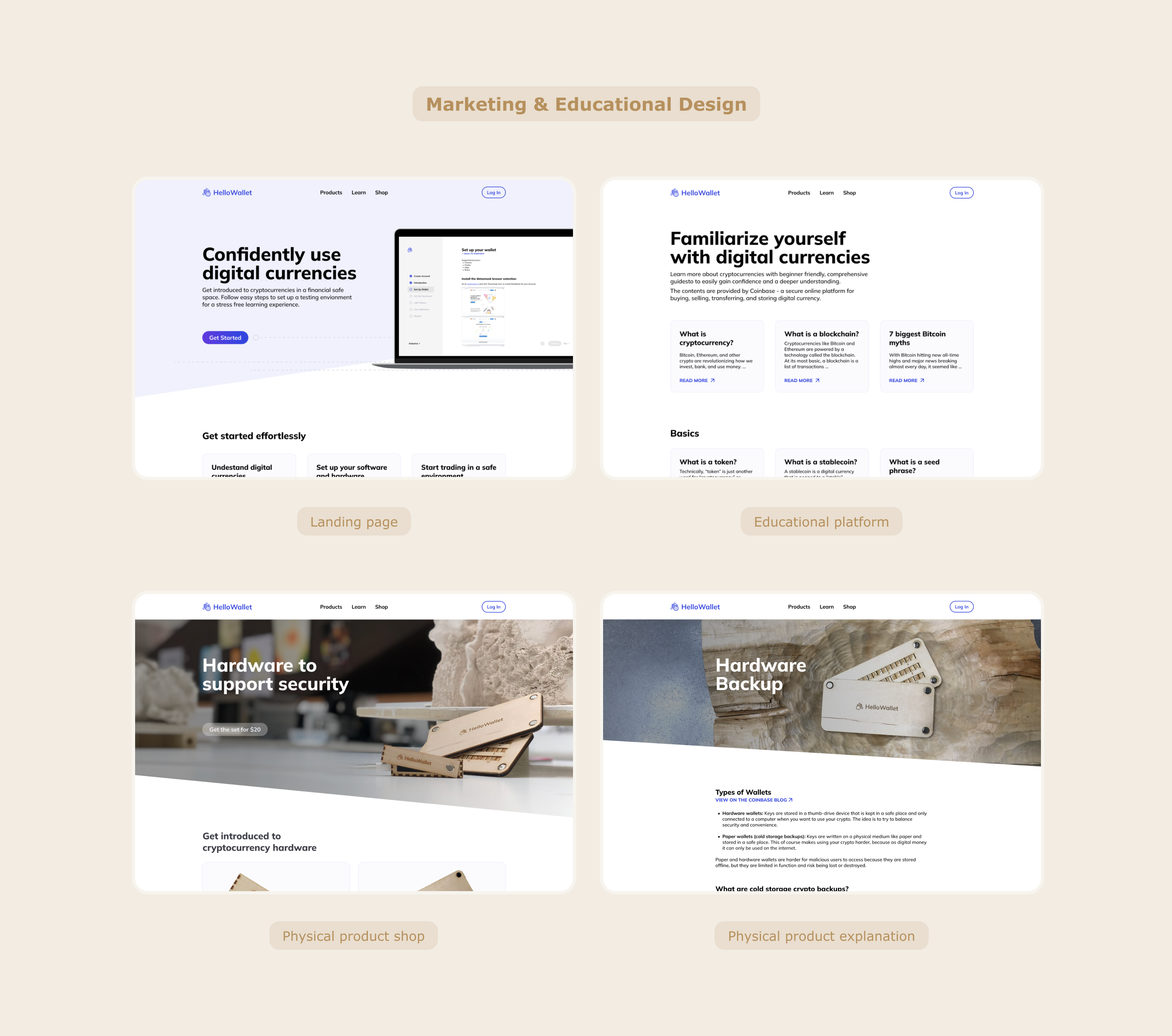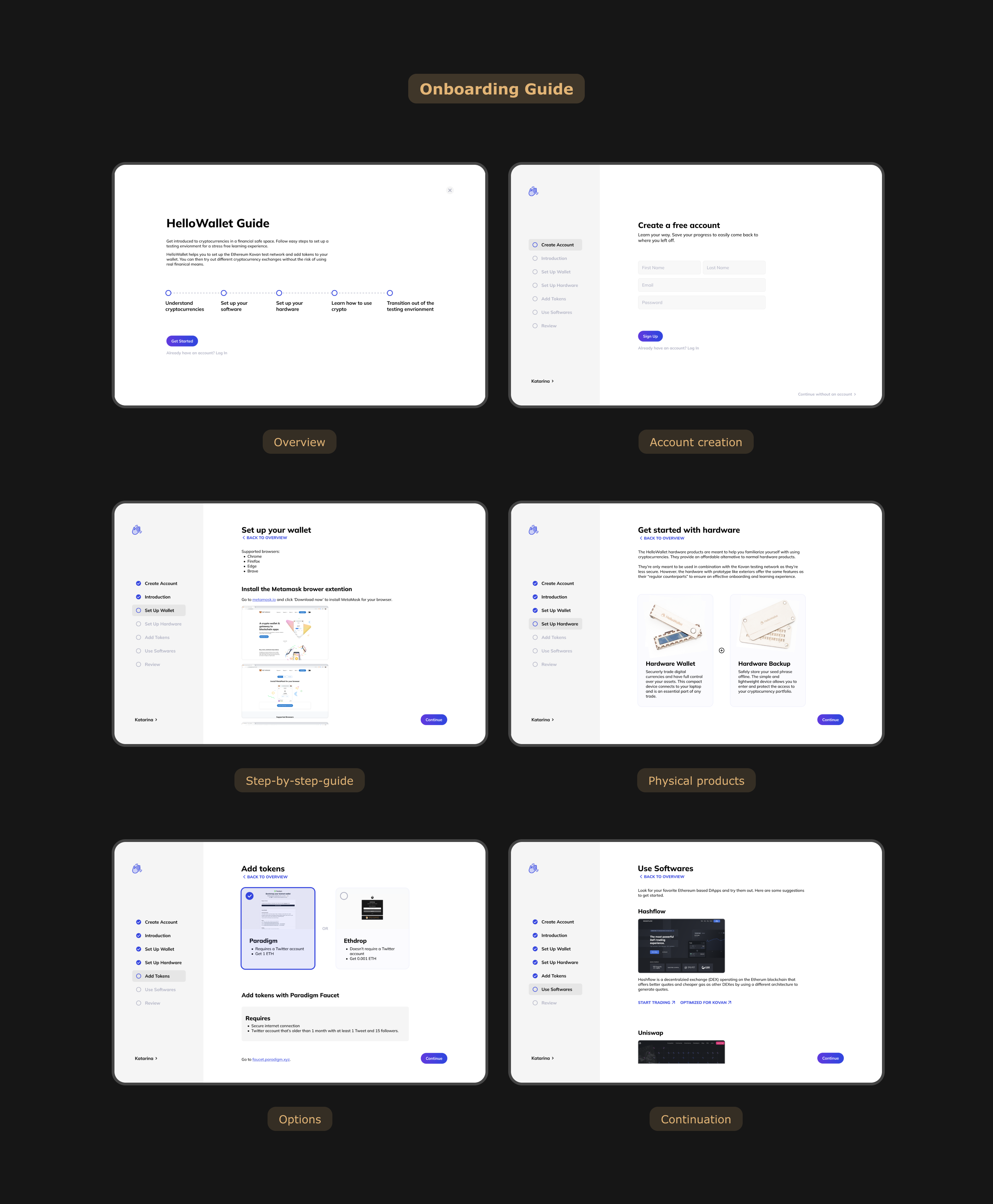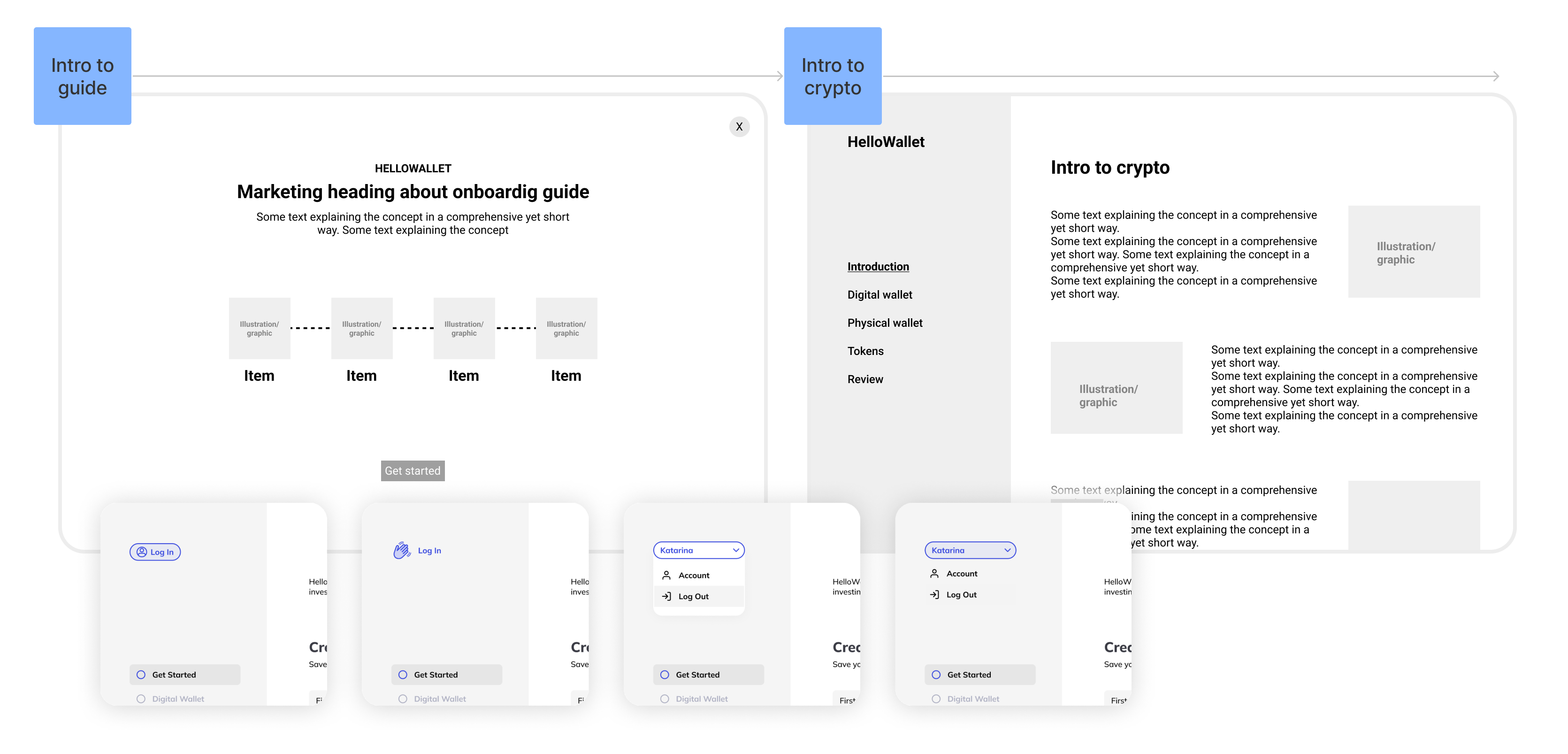Problem
Crypto is technical, complex and dominated by risk averse young users with an accumulation of prerequisite knowledge.
There is a lack of guidance for initial, non-technical users which creates a generational disconnect in financial literacy, which is the foundation of modern financial opportunities.
Solution
I created a web based onboarding guide to use the Kovan test network as a risk free learning environment. This was also supported by educational content curation for crypto.
I also paired the digital experience with physical prototypes to introduce users to necessary hardware without bigger financial commitment.












